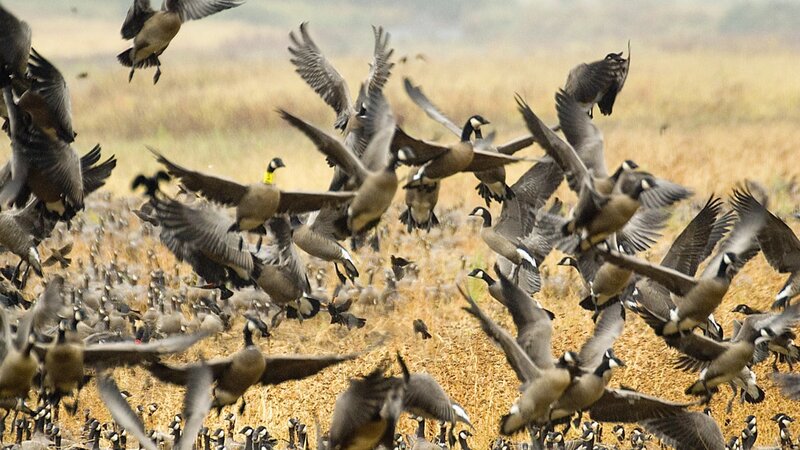Highly pathogenic avian flu is on the rise among cackling geese. And at Staats Lake in Keizer, around 400 geese have been reported dead in the past two weeks from aspergillosis, a fungal infection.
Dr. Julia Burco is a wildlife veterinarian with the Oregon Department of Fish and Wildlife. She said geese deaths spike every fall.
“Part of it is because they’re a little more stressed due to migration, and so diseases can be coming in from other areas,” said Berco. “And some of it is climatic conditions.”
Burco said aspergillosis rates are consistent from year to year. Geese can develop an aspergillus infection by migrating through moldy crops or feed.
However, Burco said avian flu has become more dangerous recently, as more virulent strains infect the local population. She said while they’ve seen healthy ducks carrying the virus, geese face high mortality rates.
Burco encourages the public to report sick birds to the ODFW, at [login to see] .
“We’re not going to necessarily respond to each call or go out to each site, because we don’t have the manpower,” she said. “But we’ll try to get the appropriate information and document those reports.”
To identity avian flu, the public can look for distinct neurological symptoms. This includes birds who are irresponsive, walk in circles or have cloudy eyes. Both aspergillosis and avian flu cause respiratory distress.
Burco said it’s rare for avian flu to infect people, but it’s best to avoid contact with a sick bird. Aspergillosis is not contagious.



 Wildlife
Wildlife



